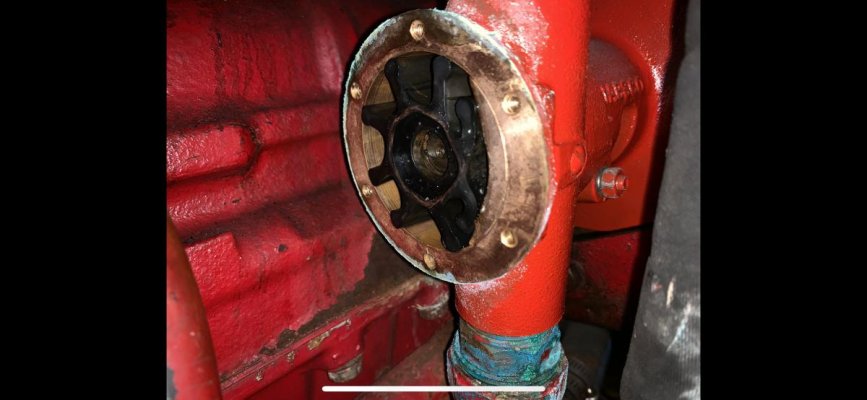Steve91T
Guru
- Joined
- Sep 12, 2016
- Messages
- 898
- Location
- USA
- Vessel Name
- Abeona
- Vessel Make
- Marine Trader 47’ Sundeck
Hey guys. We’ve out about 20 hours on the boat since we got her a couple of months ago. On our last trip towards the end of a 5 hour day, we decided to push the power to 1900 RPM or so for a bit. After about 15 minutes or so the starboard engine alarmed, water temp was 200. Port engine was still 175 or so. We throttled both back to 1500 RPM and the temps returned to normal. We anchored for the night and I decided to deal with it the next day if we still had a problem. Well sure enough, once under way the following day, the starboard engine alarmed even though we never got over 1600. We dropped the anchor and cleaned the strainer, which was pretty full. It didn’t seem to make a difference as it alarmed again in just a few minutes. We shut it down and continued on one engine. I thought for sure it was the impeller. I couldn’t track one down so we just continued the rest of the 2 day trip on the port engine, firing the starboard engine just for docking. Once at the new marina, I pulled the cover off the impeller and to it looks brand new. So that ain’t it. The strainer is clean I have water flow out of the exhaust, just not as much as there usually is. Being that this came on so suddenly, I would think there’s a blockage somewhere. But how could anything get past the strainer?
I’m headed to the boat early next week, if anyone has any experience with this and has any tips or tricks to help me figure this out, I’d really appreciate it.
Thanks
Steve
I’m headed to the boat early next week, if anyone has any experience with this and has any tips or tricks to help me figure this out, I’d really appreciate it.
Thanks
Steve

